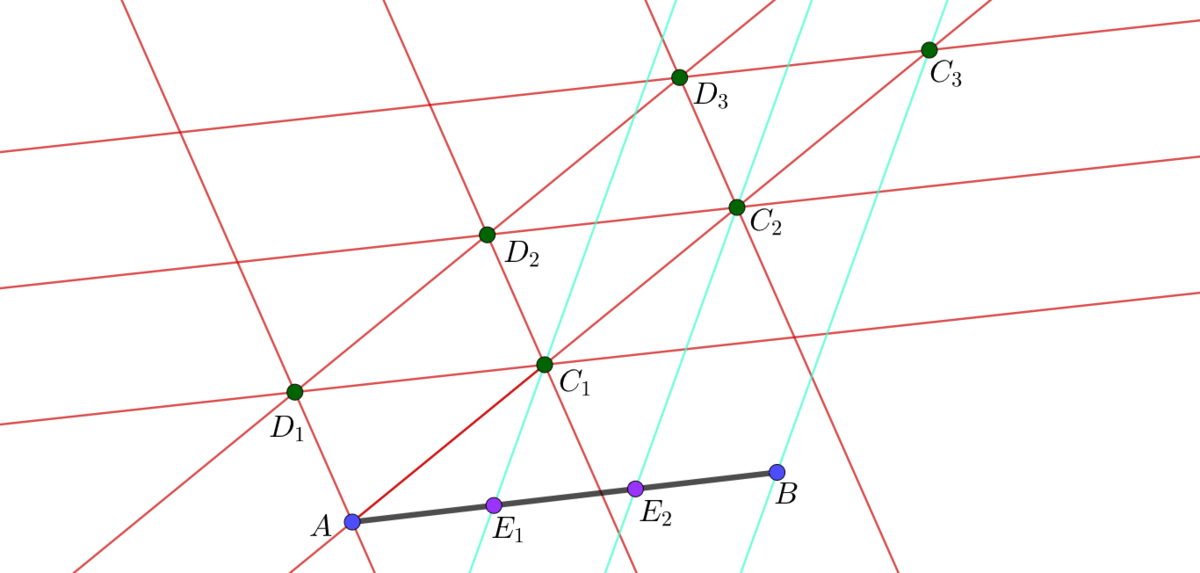Constructing square roots
A gives B a natural number n . Then B is given a line segment of length 1, a piece of paper, straightedge, compass and pencil. He says, "I can't divide the line into n equal segments." Then
This section requires Javascript.
You are seeing this because something didn't load right. We suggest you, (a) try
refreshing the page, (b) enabling javascript if it is disabled on your browser and,
finally, (c)
loading the
non-javascript version of this page
. We're sorry about the hassle.
2 solutions
solution please
It should be a Lvl 1 thing in my opinion... Basic affine constructions like this should be standard geometry bread-and-butter!
Here's a beautiful thing: dividing line SEGMENTS (lines are infinitely long) into n equal segments is not even something you need a compass to do. Here are the steps to do such a thing in affine geometry (here, we assume the axiom that there is a unique line through a given point that is parallel to a given line, i.e. the two lines do not meet):
-
Construct the line segment A B , given points A and B in affine n -space.
-
Take one of the points on the line segment, say A , and draw a line through A not parallel to the line A B .
-
Pick a point C 1 on the line constructed in Step 2.
-
Draw a line through A not parallel to the line A B or A C 1 , and pick a point D 1 on this line.
-
Construct a parallel line to the line A C 1 through the point D 1 .
-
Construct a parallel line to the line A D 1 through the point C 1 , and define the meet (intersection) of this line with the line in Step 4 to be the point D 2 .
-
Draw the line D 1 C 1 and construct a parallel line to this line through the point D 2 .
-
Define C 2 to be the meet of the line constructed in Step 6 with the line A C 1 .
-
Repeat Steps 5-7, now with C 1 , C 2 and D 2 instead of A , C 1 and D 1 ; we do this n − 1 times, so that we get n copies of the line segment A C 1 .
-
Suppose then that the last point we have is C n ; we then draw the line B C n .
-
Through each of the points C i , for i ranging from 1 to n − 1 , draw the lines through each of the points, parallel to the line drawn in Step 9.
-
The meets of each of the lines in Step 10 and the line segment A B will then be denoted by E i , for i ranging from 1 to n − 1 .
As a result of this construction, we then have that the points E i , for i ranging from 1 to n − 1 , divide the line segment (\overline{AB}) into n equal line segments.

I did a construction (see picture above) where I just divided a simple line segment into 3 equal segments.
This isn't a solution but if you want me to give one I can, just write a comment asking me to.
I'm just asking, why is this lvl 2? It should be like lvl 3 at least...
Solution:
Suppose the initial line segment (of length 1) is P Q , wher P and Q are points. Then from P construct a segment, P N , with length n which is divided into n segments of length 1 . Construct lines parallel to N Q through the division of P N .
All of these constructions are pretty standard (such as constructing parallel lines through a point).